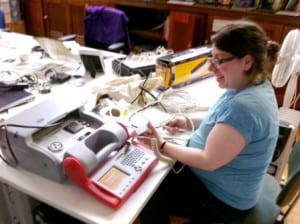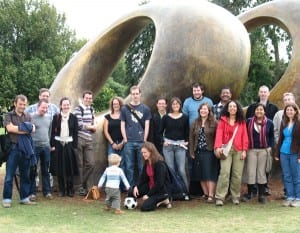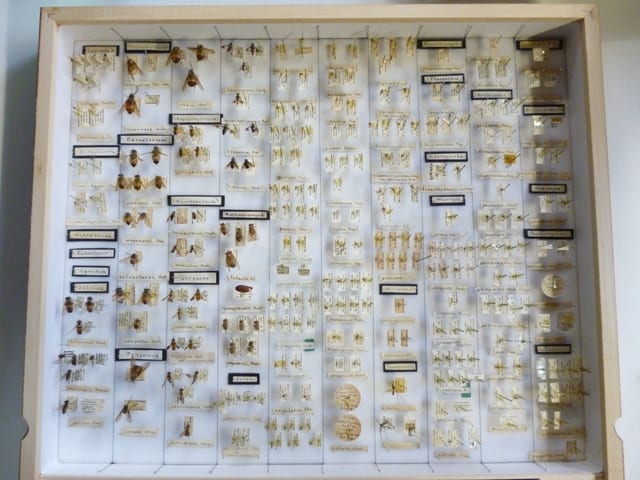Squirrels and Earth Resistance
By Pia K Edqvist, on 17 July 2014
The past couple of days people have found me in all sorts of random places: popping up from under tables, looking in cupboards and spying behind display cases. Initially we thought we were looking for a squirrel; thinking we would be finding a bionic-like animal with fluorescent eyes (pretty exciting). But in the end we realised that this ‘squirrel’ was actually the environmental monitoring box. This ‘squirrel’ was among many items that had to be located, but why?
Excitingly enough, I have been supervising the Portable Appliance Testing (PAT testing) executed in the Grant Museum and the Petrie Museum. This test is used to check whether a portable/moveable electrical item is safe to use. As we do not have the expertise in-house to execute this kind of testing we had to search for help elsewhere. Fortunately assistance was not far away; this could be found within the department among the staff at the Bloomsbury Theatre. Theatre Technician Jo Howcroft came to the rescue bringing her expertise within the area. She also kindly explained the process of PAT testing (which is more complicated than one would ever imagine):
 Close
Close






 Last Wednesday the staff of the Grant Museum went on an expedition to the
Last Wednesday the staff of the Grant Museum went on an expedition to the 
